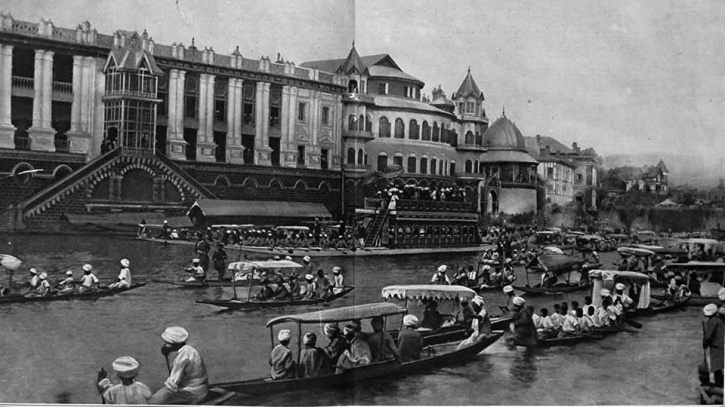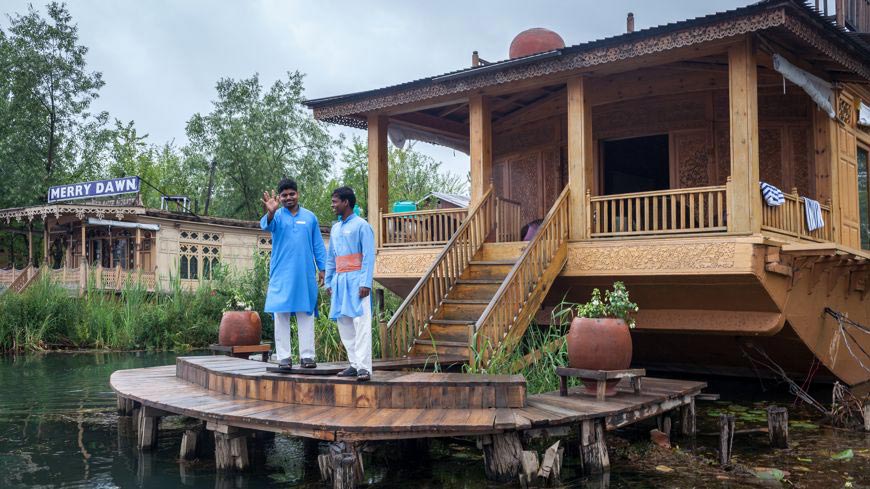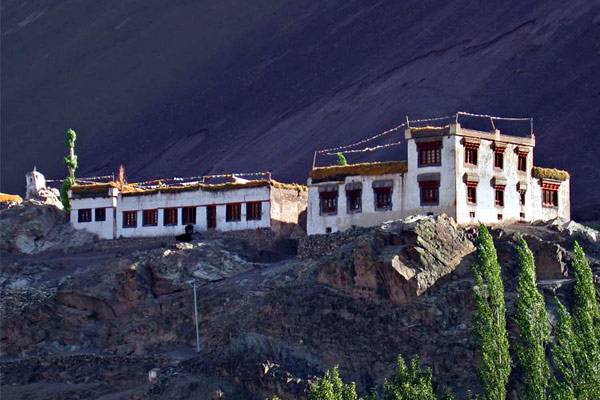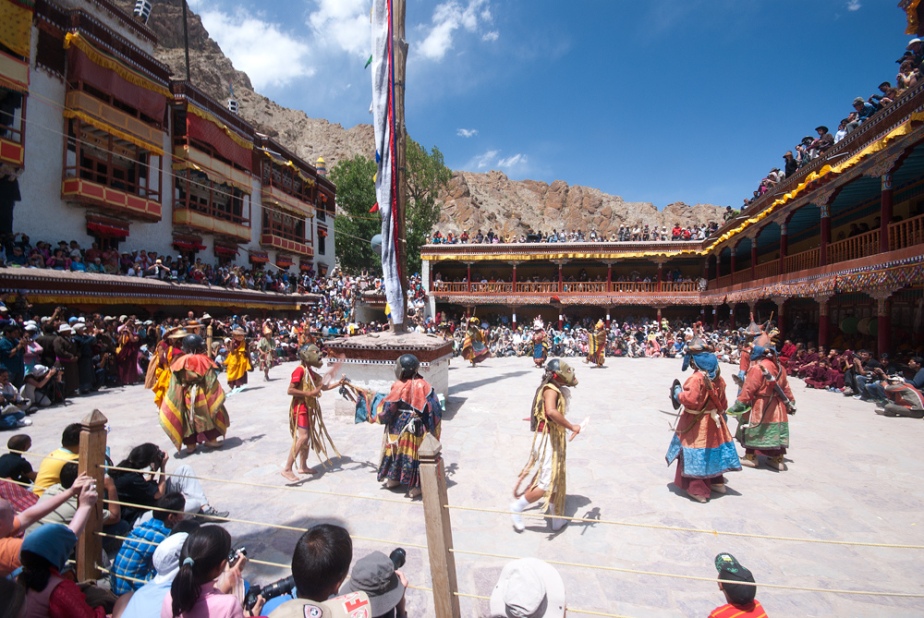Background:
Kashmir has been at the heart of a territorial dispute between India and Pakistan since the two nations gained their independence in 1947. Both claim Kashmir. In 1948 the then-ruler of the princely state of Jammu and Kashmir, Maharaja Hari Singh, who was holding out for independence, acceded to India on condition that the state retain autonomy in all matters except defense, currency and foreign affairs. The accession was provoked by the invasion of Pakistani raiders and an uprising of villagers in the western part of the state. Fighting between India and Pakistan ended with U.N. intervention; since 1948 the cease-fire line has been monitored by the U.N. Military Observer Group on India and Pakistan (UNMOGIP). The far northern and western areas of the state are under Pakistan’s control; the Kashmir valley, Jammu, and Ladakh are under India’s control. U.N. resolutions calling for a plebiscite to determine the final status of the territory have been rejected by India, which claims that because Kashmiris have voted in national elections in India, there is no need for a plebiscite. Pakistan maintains that a plebiscite should be held. Several of the militant groups in Kashmir have also called for a plebiscite but argue that an independent Kashmir should be an option. On July 2, 1972, India and Pakistan signed the Simla Accord, under which both countries agreed to respect the cease-fire line, known as the Line of Control, and to resolve differences over Kashmir “by peaceful means” through negotiation. The Simla Accord left the “final settlement” of the Kashmir question to be resolved at an unspecified future date. Since then, the Simla Accord has been the touchstone of all bilateral discussions of the Kashmir issue, even though the accord itself left the issue unresolved.
Human Rights Organisation Report:
India’s efforts to manipulate elections in Kashmir and suppress dissent have marked Kashmir’s history since 1948, but it was not until 1986 that discontent within the state found wider popular support. In that year the state’s ruling National Conference (NC) party, widely accused of corruption, struck a deal with India’s Congress Party administration that many in Kashmir saw as a betrayal of Kashmir’s autonomy. A new party, the Muslim United Front (MUF), attracted the support of a broad range of Kashmiris, including pro-independence activists, disenchanted Kashmiri youth and the pro-Pakistan Jama’at-i Islami, an Islamic political organization, and appeared poised to do well in state elections in 1987. Blatant rigging assured a National Conference victory, which was followed by the arrests of hundreds of MUF leaders and supporters. In the aftermath, young MUF supporters swelled the ranks of agrowing number of militant groups who increasingly crossed over to Pakistan for arms and training. The major militant organizations were divided between those advocating an independent Kashmir and those supporting accession to Pakistan. In the late 1980s, the groups began assassinating NC leaders and engaging in other acts of violence. Some groups also targeted Hindu families, and a slow exodus of Hindus from the valley began.
After the elections, militants of the JKLF and other groups stepped up their attacks on the government, detonating bombs at government buildings, buses, and the houses of present and former state officials, and enforcing a state-wide boycott of the November 1989 national parliamentary elections. One month later, JKLF militants abducted the daughter of Home Minister Mufti Mohammad Sayeed, then freed her when the government gave in to demands for the release of five detained militants. That event, together with a surge in popular protest against the state and central governments, led the central government to launch a massive crackdown on the militants.
On January 19, 1990, the central government imposed direct rule on the state. From the outset, the Indian government’s campaign against the militants was marked by widespread human rights violations, including the shooting of unarmed demonstrators, civilian massacres, and summary executions of detainees. Militant groups stepped up their attacks, murdering and threatening Hindu residents, carrying out kidnappings and assassinations of government officials, civil servants, and suspected informers, and engaging in sabotage and bombings. With the encouragement and assistance of the government, some 100,000 Hindu Kashmiris, known as “Pandits,” fled the valley. By May 1990, rising tension between Pakistan and India following the escalation of the conflict in Kashmir raised fears of another war between the two countries.
In late 1993, the All Parties Hurriyat Conference (APHC), an umbrella organization of the leaders of all the political and militant organizations fighting for independence, was founded to act as the political voice of the independence movement. However, rivalries within the APHC have limited its effectiveness. Charges of corruption have also tainted some APHC leaders.1
In the mid-1990s, Indian security forces began arming and training local auxiliary forces made up of surrendered or captured militants to assist in counterinsurgency operations. These state-sponsored paramilitary groups have committed serious human rights abuses, and human rights defenders and journalists have been among the principal victims.
In May 1996, parliamentary elections were held in the state for the first time since 1989. Militant leaders called for a boycott, however, and there were widespread reports that security forces had forced some voters to go to the polls. During state assembly elections in September of that year as well, residents-particularly those living in Srinagar and other cities-also complained that the security forces had tried to counter a militant boycott by forcing some people to go to the polls. However, a large number appeared to have voted voluntarily. Following the election, the National Conference party formed the first state government since 1990. Farooq Abdullah, who together with leaders from the Congress Party had been responsible for rigging state elections in 1987, again became chief minister.
On May 11 and 13, 1998, India tested five nuclear devices, and three weeks later, Pakistan responded in kind. The tests ignited a firestorm of criticism around the world and triggered sanctions by both countries’ donors and trading partners. In the months following the tests, an upsurge in shelling and shooting by Indian and Pakistani troops stationed along the cease-fire line in Kashmir left over one hundred civilians dead. Following a the Indian prime minister’s historic bus trip from New Delhi to the Pakistan border in February 1999, the prime ministers of both countries signed the Lahore Declaration in which they vowed, among other things, to renew talks on Kashmir and to alert each other of further arms tests. Following such a warning, on April 11,1999, India test-fired its long-range Agni missile, and on April 14 and 15, Pakistan did the same with its long-range Gauri and medium-range Shaheenmissiles. India conducted another ballistic missile test on April 16; the exchange again raised international concern about the prospects for an arms race on the subcontinent.
Rising tensions in the region have made clear that both India and Pakistan have legitimate security concerns related to Kashmir. But these concerns justify neither the abuses committed by Indian military and paramilitary forces nor Pakistan’s support for fighters who have also committed serious human rights violations.
Parties to the Conflict
As of 1999, the major militant organizations fighting in Kashmir included the Hizb-ul Mujahidin, Harakat-ul Ansar and Lashgar-i Toiba. The latter two, in particular, are reported to include a large number of non-Kashmiris. Most of these groups support accession to Pakistan. The Jammu and Kashmir Liberation Front (JKLF), the organization that spearheaded the movement for an independent Kashmir, declared a cease-fire in 1994. All groups have reportedly received arms and training from Pakistan. The weapons they have used include AK-47 and AK-56 assault rifles, light machine guns, revolvers, and landmines. The militants are also reported to have sophisticated night-vision and wireless communication equipment. Officially, the Pakistani government has denied involvement in arming and training Kashmiri militants, but the claim is generally not considered credible.
Central government forces operating in Kashmir include the Indian Army and India’s federal security forces, the Central Reserve Police Force (CRPF), and the Border Security Force (BSF). The army’s role in the conflict expanded in 1993 with the introduction of the Rashtriya Rifles, an elite army unit created specifically for counterinsurgency operations in Kashmir. The Rashtriya Rifles have been the main force in charge of counterinsurgency operations in Doda, Rajouri and Punch. As of June 1999, some 400,000 army troops and other federal security forces were deployed in the valley, including those positioned along the Line of Control.2
In May 1999 India deployed thousands of additional troops to the Kargil region. The local Jammu and Kashmir policemen are generally not involved in counterinsurgency operations, largely because they are believed to be sympathetic to the insurgency.3 However, in 1995 the Special Task Force (STF) and the Special Operations Group (SOG), counterinsurgency divisions of the Jammu and Kashmir Police made up of non-Muslim non-Kashmiri recruits, including some former militants, were formed apparently to create the impression that the counterinsurgency effort had local support. These police forces frequently operate jointly with the Rashtriya Rifles.
Since at least early 1995 Indian security forces have armed and trained local auxiliary forces made up of surrendered or captured militants to assist in counterinsurgency operations. These forces, who function outside of the normal command structure of the Indian army and other security forces, nevertheless are considered state agents under international law. These groups participate in joint patrols, receive and carry out orders given by security officers, and operate in full view of army and security force bunkers and camps. Some members of these groups are even housed in military compounds. They include Ikhwan-ul Muslimoon and Muslim Mujahidin.



















